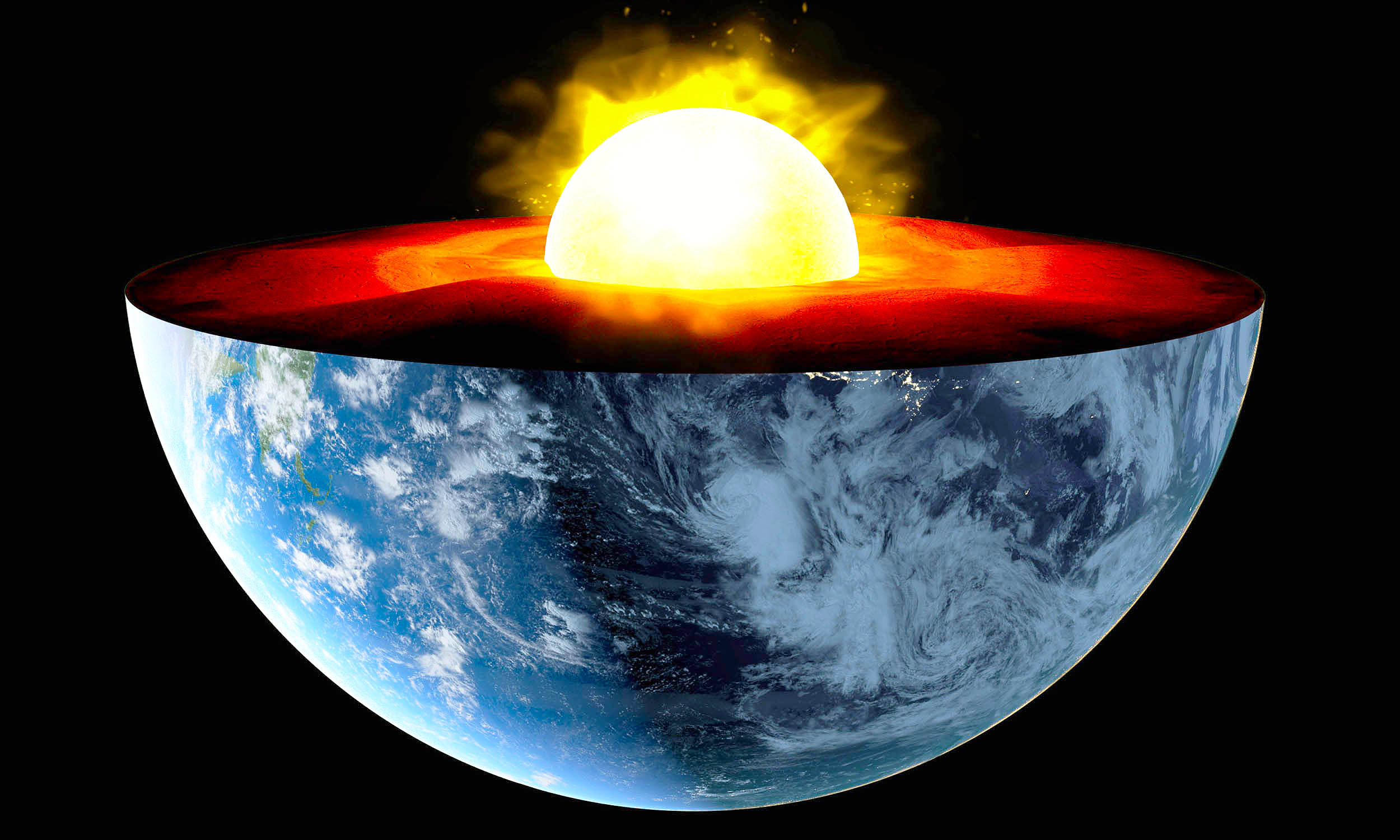In this modern age, we often take the stability of our world for granted. However, an academic revelation suggests that we are in the midst of a change so drastic that it feels like the ground is shifting beneath our feet. Well, at least the ground 3,220 miles beneath our feet, in the Earth’s inner core.
Research led by Dr. John Vidale, Dean’s Professor of Earth Sciences at the University of Southern California’s Dornsife College of Letters, Arts and Sciences, has confirmed a slowing of the rotation of the Earth’s inner core to the point where it is moving backwards. This puzzling shift could have profound implications for our planet.
The Earth’s inner core
Our Earth holds a secret deep inside. The Earth’s inner core, discovered by Danish seismologist Inge Lehmann in 1936, is a solid metal ball, somewhat akin to an inscrutable top, spinning independently inside our spinning planet.
Despite its elusive nature, the inner core has attracted the interest of the scientific community due to its peculiar properties, particularly its rotational speed and direction.
The ongoing debates have ultimately led to the claim that the rotation of our inner core is not constant, but may actually be slowing down.
Seismic waves
Understanding the inner core’s rotation is a bit like trying to read a book in the dark. The inner core is out of reach for direct observation or sampling.
Scientists base their research on the seismic waves from large earthquakes and their interaction with the core to gain insight.
“Differential rotation of the inner core was proposed as a phenomenon in the 1970s and 1980s, but it was not until the 1990s that seismological evidence was published,” said Dr Lauren Waszek, a senior lecturer in physical sciences at James Cook University in Australia.
However, the interpretation of these findings is controversial due to limitations in observing and collecting accurate data.
The Earth’s core is spinning more slowly
One hypothesis, put forward in 2023, stated that the inner core, which once spun faster than Earth, is now spinning more slowly.
At one point, the scientists reported, the core’s rotation matched that of the Earth. Then the core began to slow down and move backward relative to the fluid layers around it.
This proposition is strengthened by recent research, which not only confirms the core slowdown, but also supports the idea that this slowdown is part of a decades-long pattern of varying speeds.
Cycle of the Earth’s Inner Core
The new research led by Dr. Vidale shows that changes in rotation speed follow a 70-year cycle.
“We’ve been arguing about this for 20 years, and I think this is the point,” Vidale said. “I think we’ve ended the debate about whether the inner core moves and what the pattern has been over the last few decades.”
Despite this confidence, not everyone is convinced that the case has been solved.
The implications of the inner core’s slowing down and how it might affect us remain a perplexing puzzle, although some link it to Earth’s magnetic field.
Magnetic phenomenon
The interaction between the Earth’s magnetic field, gravity, the flow of the liquid outer core and the mantle cause variations in the rotation rate of the core.
This ‘push and pull’ affects the strength and positioning of our inner core.
A slower-spinning core, studies suggest, could potentially affect Earth’s magnetic field, a protective shield that shields the planet from deadly solar radiation. It could also shorten the length of a day by a fraction.
Delving deeper into the heart of the matter
Unraveling the mysteries of the rotation of our inner core – although imperceptible to us – offers great potential.
This research provides an interesting glimpse into how the Earth’s deep interior formed and how activity throughout the planet’s subsurface is interconnected.
For example, seismic waves caused by earthquakes at different times show changes in core rotation over time.
Based on their calculations, Dr. Vidale and his team predict that the core will accelerate again in about five to ten years.
As interesting as that sounds, it still leaves us on the incline of this scientific rollercoaster. “We need more data and improved interdisciplinary tools to investigate this further,” Dr. Waszek advises.
On the way to an unknown territory
As we delve deeper into the mysteries of our Earth’s inner core, we discover countless possibilities.
The boundary where the liquid outer core envelops the solid inner core is a region where “liquid and solid meet,” as Dr. Vidale puts it, “filled with potential for activity.”
This interplay between the rotation of the inner core and the motion of the outer core helps drive Earth’s magnetic field. However, the exact role of the inner core needs further investigation.
One thing is certain: we are on the brink of a new frontier in our understanding of our Earth. As we delve deeper into the mysteries of our planet, we may discover a new worldview.
—–
Like what you read? Subscribe to our newsletter for engaging articles, exclusive content and the latest updates.
Check us out on EarthSnap, a free app from Eric Ralls and Earth.com.
—–
